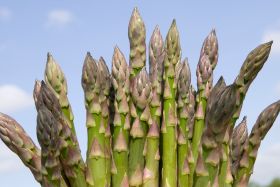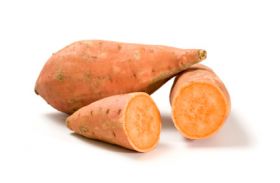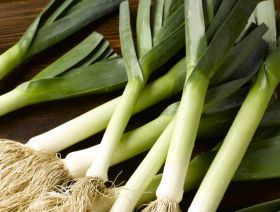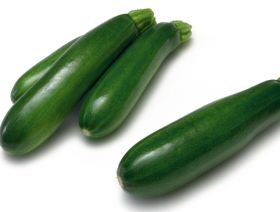
The FPJ Big 50 Products ranks the 50 best-selling fresh fruit and vegetable products by sales value, using Kantar Worldpanel data for the 52 w/e 20 May 2018.
31. Plums
Value: £83.7m (-8.2%) Volume: 40.1m kg (-14%)

Plums hit by worst of all weathers
Plums played the third wheel of the stonefruit category last year, after a 12 months to forget due to drought conditions in parts of South Africa. As a later harvest than peaches or nectarines, plum trees suffered the worst with the water shortage.
Dan Masters, commercial manager at Norton Folgate, explains: “Normally South African plums run from December to April, but they had a massive lack of water. They had to pick and choose which crops they could water. The crop set wasn’t great as a result, and they came from high-stress trees.”
With tight supply, more plums arrived from Chile “which has to travel further, affecting quality, and there can be fewer repeat customers,” according to Masters. Plums then lost momentum during the winter period, a key time for the “Christmas stonefruit” with higher prices and lower quality pushing shoppers away.
The late South African crop was compounded by an early finish to the Spanish season in 2017 after a bumper year, which hit growers hard following gluts that slashed stonefruit prices. This year, however, bad weather in Spain, featuring rain and hail, resulted in low volumes at the start of the season.
32. Asparagus
Value: £77.2m (-1.1%) Volume: 8.7m kg (-5.6%)

Retail changes and weather reduce volumes
Asparagus has proved a successful veg in recent years, boasting versatile qualities and popularity in various dishes. It has however simmered down this year with value tapering somewhat like the tip of a spear.
Last season’s sudden flush in May led to discounted prices, reducing value across retailers. “We had a steady production with a really big flush, and we had massive amounts of production through May, which caused us concern. It’s not really what you want; you don’t want to have to do heavy discounts,” says Ross Baker of Evesham Vale Growers.
During the 2017 UK asparagus season revenues actually increased marginally, but imports during the winter failed to grow the overall value of the category. According to Per Hogberg of Wealmoor, retailers also switched to smaller pack sizes, which meant reduced volumes.
New shoppers are entering the category, however, with consumers now favouring tips and fine asparagus over bundles, and with market penetration on the rise, it is no longer confined to higher-income buyers. This season, early data is also showing a rise in value, after a slow start due to the cold spring was salvaged by the sudden heatwave which began in May.
33. Sweet potatoes
Value: £74.8m (-1.7%) Volume: 67.6m kg (-5.6%)

Innovation offers hope for stalling category
Sweet potato suppliers will hope the bubble hasn’t burst on one of the fresh produce category’s big success stories after what has been an undeniably disappointing 12 months from a sales perspective.
After nearly 15 per cent volume growth last year, there has perhaps been an element of realignment in this year’s 5.6 per cent decline, but allied to a 1.7 per cent value drop it brings to an end years of strong growth.
Nevertheless, there’s no reason not to be optimistic for the future. “The fundamental premise that sweet potatoes are a great alternative carb and deliver one of your 5 A Day has in essence not changed, and the success we have enjoyed over recent years has now transcended into other categories,” says Wealmoor chief executive Avnish Malde. “This can perhaps be attributed to the latent innovation curve across frozen, prepared and foodservice, where products have been developed and brought to market.”
Such recent innovation includes Branston’s new ready-to-cook line of sweet potato fries, a product which gives a nod to the importance of developing convenient solutions for modern consumers. Albert Bartlett also moved into branded sweet potatoes with a new launch in Ocado last summer, suggesting suppliers still see a bright future for the category.
34. Leeks
Value: £73.2m (-2.5%) Volume: 37.4m kg (-9.4%)

Leeks lacking glamour for new buyers
The raw sales figures don’t paint an especially rosy picture for the leek category, which has suffered 2.5 per cent value and heavy 9.4 per cent volume decline in the past year.
A firmly winter product, leeks are struggling to find a new audience and the mood among growers is not particularly upbeat.
Nick Allpress, managing director of leek grower and packer Allpress Farms, says the large volume decline is mainly due to the fact that consumers are not buying into the category as much, and are attracted to cheaper alternatives.
A major problem farms face, he explains, is the high cost of labour, and that situation is only exacerbated by potential worker shortages brought about by Brexit.
An industry campaign by the British Leek Growers Association is trying to turn around the category’s fortunes, and appealing to younger consumers and home cooks should help given the fact leeks are a multi-purpose product that can add flavour to a wide variety of dishes.
It is clearly a category in need of reinvention, and that is likely to come in the shape of packaging and formats rather than varietal development on what is a largely uniform product.
35. Courgettes
Value: £71.6m (+5.3%) Volume: 35.5m kg (+1.4%)

Courgettes enjoying new-found popularity
The marrow, the zucchini, the summer squash, the courgette. The veg with a thousand names is blossoming with Britain’s dietary and culinary progression. Once seen as a cucumber for hot meals, the nation has realised its own innate qualities, and sales are upwardly mobile.
This year saw some strong figures for a mature category. “Courgettes are becoming a very, very popular product,” says Southern England Farms managing director Greville Richards. “Spiralisation and courgette spaghetti have helped a lot – there’s a lot of volume used in spiralising now.”
The lower volumes this year stemmed from a washout last summer. “All of our courgettes are grown in Cornwall and it was the wettest and hardest summer we’ve seen for courgettes since we’ve been growing them.”
New innovative prepared forms and recipes have driven the category, with Southern England Farms ramping up production to meet demand.
Like other crops though, this season’s heatwave could badly affect next year’s stats. “Yields are going to start dropping back dramatically if we don’t see any rain soon,” says Richards.
But demand will unlikely go with it. “I expect courgette sales to continue to grow,” Richards concludes. “Wholehead sales are quite buoyant at the moment.”






No comments yet